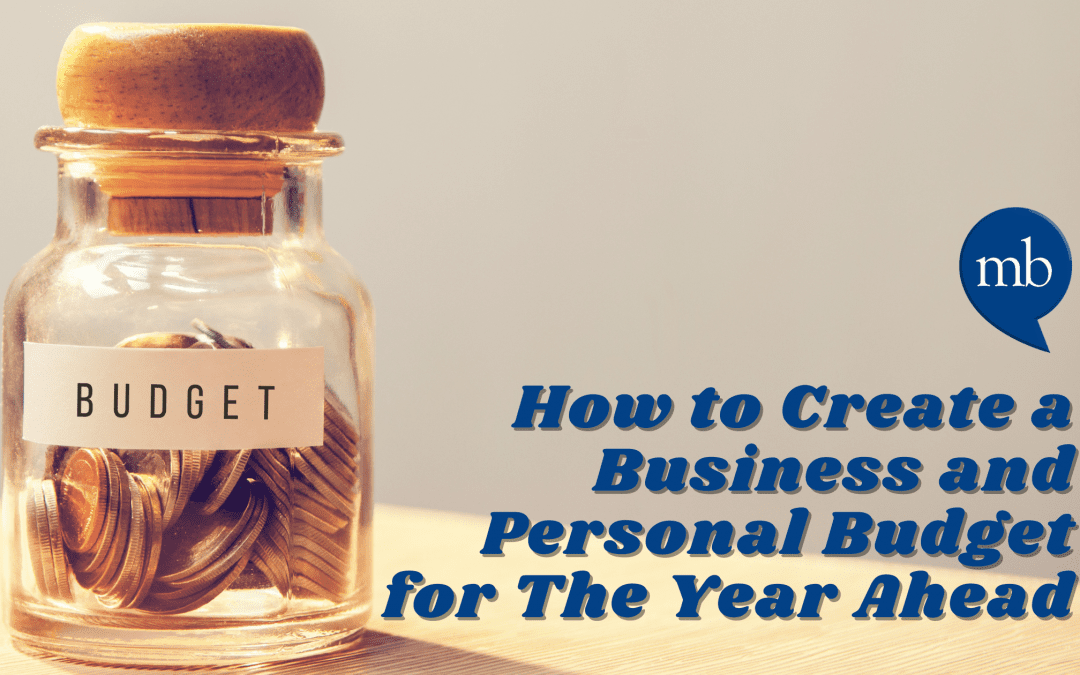With a new year comes a new start. What better way to start the year than to talk about the topic of budgeting for both personal and business use. Perhaps you want to save money for a holiday or avoid getting into debt. On the other hand, you may just simply want a handle on your finances. Therefore, a new year is a perfect time to start afresh and create a business and personal budget for the year ahead.
How to create a business and personal budget
First, let’s start to create your personal budget
Budgeting is important to do to ensure you aren’t spending over your means. It allows you to have a clear idea of money incoming and outgoing so you can question any inconsistencies. A budget will also allow you to look at where you can save and be in complete control of your finances and how much you spend.
Budgeting for the first time may feel overwhelming but it doesn’t have to be difficult. In fact, once you start, it’s easy to continue with. Let’s talk about some ideas and tips to help you budget for the year ahead.
You don’t need to be a spreadsheet expert
If you are confident in using computer programs such as Excel to create a spreadsheet for your budgeting, then that’s great. Spreadsheets can be easily amended and set up to semi-automate the budgeting process.
However, if the thought of spreadsheets sends shivers down your spine, don’t panic as it’s not essential. You can simply use a word document to list all your incoming and outgoing. Or, alternatively, you can print off a budgeting template of your choice from the internet or use one of the many free budgeting apps available for Apple and Android phones.

Write down your regular incomings or take an average
This part is self-explanatory. However, you may come stuck if your monthly incomings aren’t always the same amount. For example, if you are self-employed or on a 0-hour contract. In this instance, you have two options. You can either look back at the amounts you have received in the past 3 months or take an average. Alternatively, you can base your budgeting on the lowest amount paid within the past 6-12 months.
Basing your budgeting on the lowest amount you receive is the safest option. This way, you can base your spending on the “worst-case” scenario. Anything extra you receive can be put away in savings or spent elsewhere.
Write down all outgoings, not just the bills
We are looking at the full picture. Whilst it may seem necessary to write down just the bills that fly out of your account as soon as it enters, it’s also important to include regular spending. For example, it’s important to include things such as petrol costs, food shopping, birthday and Christmas presents. Again, these costs may not always be the exact amount each month so take an average.
Now that you have both your incoming and outgoing listed, it’s easy to see if there are areas where you feel you could save. It also reveals how much scope you have for buying any extras.
Now it’s time to create a business budget
As we mentioned, this article covers both how to create a business and personal budget. Budgeting isn’t just helpful for home life, it’s also critical to budget if running your own business. Being able to budget ensures your business thrives, and that you are taking away a healthy wage. It also allows you to see if you can afford to pay for staff and any extra materials or services you require to run your business.
Business budgeting can also identify the potential for saving, as well as how much expenditure will be needed. A business budget predicts the revenue and discusses financial goals. Whilst budgeting for your business doesn’t need to be tricky, there are more areas to consider than personal budgeting. Let’s look at some tips to help you further.
Categories of budgeting
Depending on the size and scale of your business, you will most likely have a variety of areas you need to consider when looking at outgoings. To make it easier to understand, amend and focus, you can split your budgeting into separate sections. For example, one-off yearly payments, fixed costs, and variable costs. Your budgeting may look a little like this:
One-off Payment Fixed Cost Variable cost
Insurance £100 Staff A £200 Marketing £300
Staff B £200 Materials £400
Keep a set amount aside for emergencies
Things crop up when we least expect them to. So, once you have established your revenue and cash flow, you can budget in an amount each month to keep aside for emergencies.

Does budgeting still seem daunting?
If starting a new business, budgeting and forecasting can seem overwhelming. Do you need help to create a business and personal budget? There are apps and software available to help the process be as stress-free as possible.
As always, I am here to answer any questions you have about all things finance within your business. Just get in touch with McCarthy Browne today if you’d like to know more on this subject and how we can help you.

